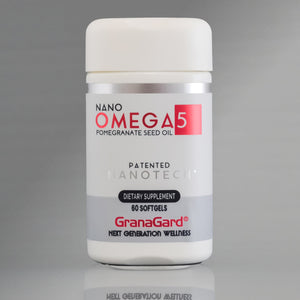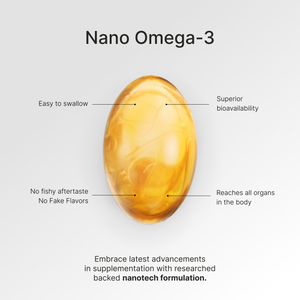Premenstrual Syndrome, Dysmenorrhea, Female Fertility, and Menopause: Common Problems Often Not Easily Treated by Conventional Medicine. Women Frequently Seek Alternative Therapies to Address These Conditions, and Omega 3 Has Shown Very Positive Results. 1 Premenstrual Syndrome
This condition affects 12% of women and consists of a set of psychiatric and somatic (physical) symptoms that develop within the luteal phase of the menstrual cycle. It interferes with a woman's daily activity and disappears after menstruation. The luteal phase begins after ovulation and ends with the onset of menstruation. The American Congress of Obstetricians and Gynecologists (ACOG) includes psychiatric and physical symptoms in describing premenstrual syndrome.
Physical symptoms include breast swelling, abdominal bloating, headaches, muscle or joint pain, leg swelling, and weight gain. Emotional symptoms include anxiety, confusion, depression, (Omega 3 can help and improve depression symptoms) aggressive outbursts, irritability, and social withdrawal.
Omega 3 in Premenstrual Syndrome
Independent research has evaluated Omega 3 (10 Omega 3 body systems organs benefit) in Premenstrual Syndrome, and a meta-analysis that finally gathered the data found in those studies reported that Omega 3 improved somatic (physical) and psychological (emotional) symptoms in Premenstrual Syndrome, increasing the quality of life for that group of women.
2 Dysmenorrhea
Dysmenorrhea is the pain that occurs with menstruation. It can be primary, which occurs in the absence of any pelvic disease, or secondary, associated with another pelvic issue. It is characterized by an overproduction of prostaglandins by the endometrium (the inner lining of the uterus), leading to an increase in uterine contractility, which reduces blood flow to the uterine muscle, thus decreasing oxygen supply and causing pain.
It is the most common gynecological consultation for women of reproductive age and one of the most frequent causes of pelvic pain. However, many cases go undiagnosed and untreated because many women accept it as a “normal” part of the menstrual cycle.
Dysmenorrhea has significant implications for quality of life, such as limiting daily activities and causing psychological stress. It is one of the leading causes of school and work absenteeism.
Omega 3 in Dysmenorrhea
In a double-blind study, where neither patients nor researchers knew what was being taken, Omega 3 (10 Omega 3 body systems organs benefit) was compared to a placebo. The study was very interesting. For three months, one group took Omega 3, while the other took a placebo.
At the end of that period, the groups were switched, and the study continued for another three months, but now those who had taken the placebo were taking Omega 3 and vice versa. The results showed that analgesic requirements were much higher in the placebo groups, demonstrating that Omega 3 is effective in helping to reduce the symptoms of dysmenorrhea.
3 Fertility
Worldwide, approximately 15% of couples of reproductive age experience infertility. Female infertility causes include ovulatory disorders, poor egg quality, mechanical factors, endometriosis, and other causes.
Omega 3 and Female Fertility
Studies have shown that Omega-3 fatty acids improve fertility by enhancing hormonal balance, egg quality (precursor cells of the egg), embryo implantation in the uterus, and menstrual cycle function. Additionally, they mitigate inflammation, which could interfere with the proper functioning of the reproductive organs.
The rigorous analysis of 10 independent studies through a meta-analysis concluded that Omega-3 intake significantly improves fertilization and pregnancy rates in women.
4 Menopause
Menopause is a period in a woman's life characterized by complex physiological changes that significantly impact her well-being. Defined as the cessation of menstruation for about a year after the last menstrual cycle, menopause occurs between the ages of 40 and 60, with an average age of 52.
In addition to vasomotor symptoms, such as hot flashes and night sweats, other significant manifestations include sleep disturbances, (6 powerful reasons to sleep well) anxiety, depression, (Omega 3 can help and improve depression symptoms) vaginal dryness, muscle discomfort, and sexual dysfunction, which collectively impair quality of life during this period.
Various metabolic disorders of lipids arise during menopause due to hormonal changes, such as decreased estrogen levels and increased circulating androgen levels. These changes can lead to the development of metabolic syndromes, including cardiovascular diseases (Benefits of Omega 3 for cardiovascular health) and type 2 diabetes, (Oxidative stress can cause Type 2 diabetes) which are of greater concern.
Omega 3 and Menopause
Omega-3 consumption has shown a wide range of beneficial effects, including cardiovascular, metabolic, and anti-inflammatory effects, making them important for menopausal women.
Omega 3 (Benefits of Omega 3 for cardiovascular health) decreases triglycerides, has antiarrhythmic and antihypertensive effects, reducing cardiovascular risk; has anti-inflammatory effects, which would help improve other symptoms such as muscle discomfort, and also reduces depression symptoms.
A New Generation of Omega 3
Omega 3 are polyunsaturated fatty acids, meaning they are in the form of oil and therefore are soluble in fats and oils but not in water. The composition of the different organs in the human body varies in the proportion of fatty tissues (lipophilic) or more water-affine tissues (hydrophilic). Another aspect to consider is that some organs, like the brain, are protected by barriers or membranes that limit access to them.
Nanotechnology (What is Nanotechnology in simple terms) has reached Omega 3. Through a process using it, Omega 3 has been transformed into a nanoemulsion, giving it two unique properties: the ability to dissolve equally in water or oil and having nanometric dimensions that allow it to cross barriers and membranes. Nano Omega 3 can reach all organs of the body.
GranaGard®'s Nano Omega 3 studies have shown that its bioavailability, the amount present in blood and organs, is four times higher than conventional Omega 3. Think for a moment… If those good results we’ve seen for premenstrual syndrome, dysmenorrhea, fertility, and menopause were achieved with conventional Omega 3; imagine what you’ll achieve with GranaGard®’s Nano Omega 3.
GranaGard®’s Nano Omega 3 will help you a lot. Try it today!





